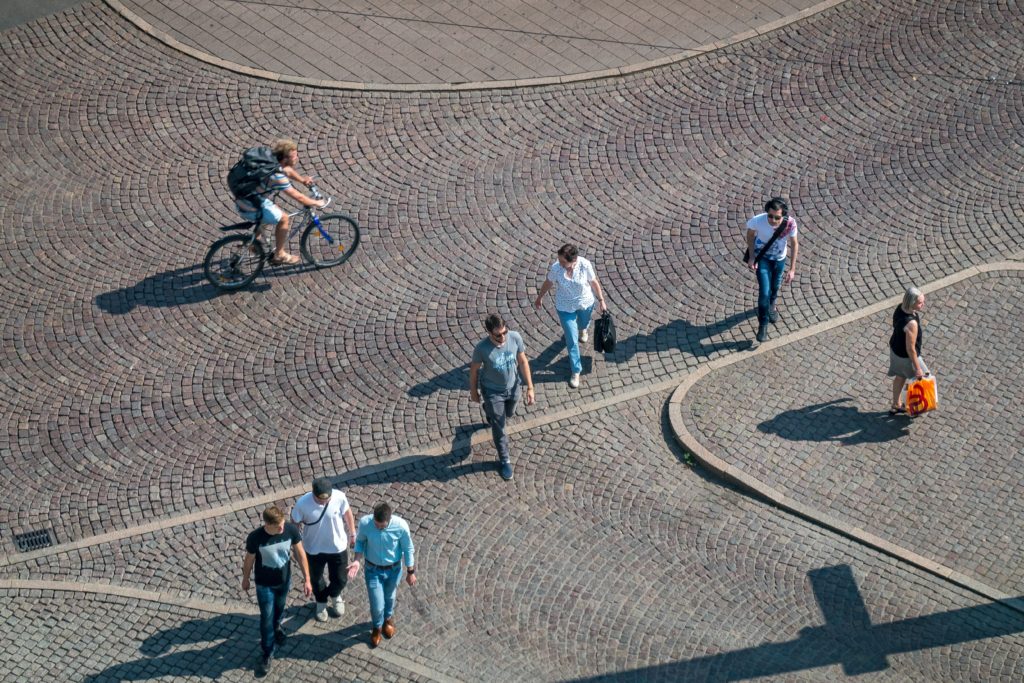Light vehicles, including passenger cars, account for about a third of global oil demand and produce about half of all transportation-related greenhouse gas emissions. Soft mobility can significantly cut passenger car-related emissions. (1)
Key actions
-
#1 Bicycle parking
Install covered and secured bicycle parking.
-
#2 Provide facilities
Provide changing rooms and showers.
-
#3 Offer bike maintenance
Provide basic bike maintenance kit at the office (pump, patches).
-
#4 Provide financial incentives
Offer financial incentives (cover part of the cost of (e) bikes, provide mileage allowances).
-
#5 Organise green events
Join or organise events such as a Bike to Work or a Bike Repair Day.
-
#6 Facilitate bicycle access
Provide bikes for local business travels.
-
#7 Involve municipalities
Encourage the municipality to install bike-friendly infrastructure (paths, parking, bike-friendly trains).
-
#8 Join forces
Mutualise and join forces with other organisations following a similar approach.
To consider
-
Potential co-benefits
- Prevention of physical diseases (diabetes and cardiovascular disease)
- Improvement of sleep
- Mental health benefits
- Reduction of transportation costs
- Reduction of congestion
-
Success conditions
- Communication on organisational incentives
- Raising awareness among staff
-
Prerequisites & specificities
- Living relatively close to the workplace
- Pedestrian and cycle paths
- Know how to ride a bike
- Access to bicycles
- Access to covered and secured bicycle parking
-
Potential risks
- Safety risks in certain areas (accidents)
- Bicycle theft
- Social (people’s eyes)
- Delays in case of modal shift due to weather constraints

Tools and good practices
To go further
-
Pan-European Master Plan for Cycling Promotion
Riding Towards Green Economy: Cycling and Green Jobs – A Joint Report by UN Environment-WHO-UNECE
Read here
Public transport

Teleworking

Car use rationalisation

Online meetings & trainings

Sources
(1) The ICCT – Light vehicles. Read here
(2) Stay grounded- What is the impact of aviation? Read here
(3) IEA – Playing my part, 2022. Read here
(4) Mobility plans: a guide for companies and institutions. Read here
(5) CERN (SCE) – Person transport demand. Read here
(6) CERN (SCE) – Bike rental. Read here
(7) CERN (SCE) – Bike sharing pilot. Read here
(8) CERN – Creation of cycle lanes on the Meyrin and Prévessin sites, 2020. Read here
(9) Infomaniak – Ecology. Read here
(10) UN General Assembly – Resolution adopted by the General Assembly on 12 April 2018. Read here
(11) Club Abidjan Ville Durable. Read here
(12) Le media citoyen – Reportage Abidjan: ces écolo préfèrent le vélo, 2019. Read here
(13) Twitter – #pédalonspourlecoeur, 2021. Read here
(14) RTI officiel (Youtube) – Environnement: Plus de 100 Eco-citoyens à vélo à l’université Félix Houphouët Boigny, 2016. Watch here
(15) Le petit journal – Sama Vélo, pour la promotion du vélo au Sénégal. Read here
(16) Twitter – Sama Vélo, 2019. Read here
(17) UN Habitat – Making commuting easier, 2019. Read here
Cover photo © Joshua Rawson Harris/Unsplash.
